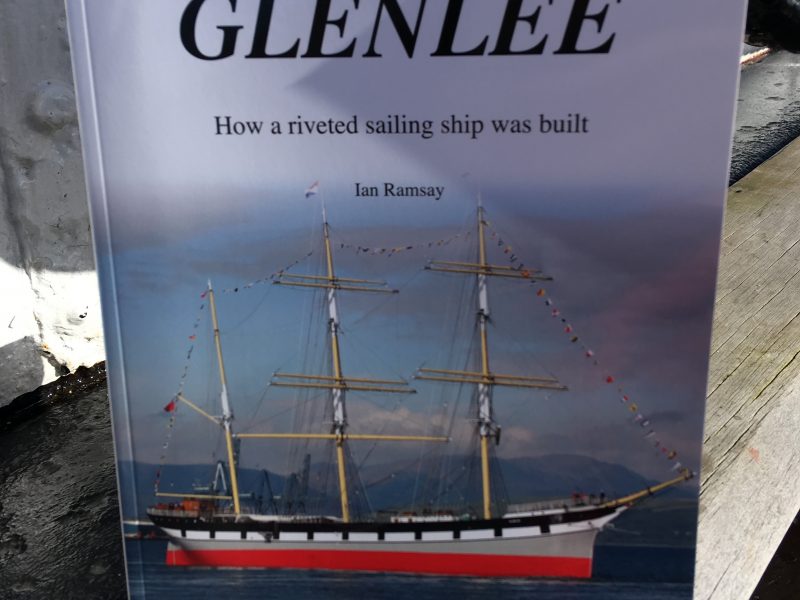What have you read recently that you REALLY enjoyed?
That’s the question the sales and marketing team asked our engineers. John was the first, and most eager, to talk about a book he’d recently read on ship building.
Glenlee How a Riveted Sailing Ship was Built by Ian Ramsay
This book documents the building of an iron sailing ship that was constructed in 1896; by ship builders based in a Port in Glasgow.
‘What amazed me about the whole process is that the desired shape of the ship, including every rib and plate line was transferred from a 1:48 scale drawing to a full scale representation of the fore and aft profiles of the entire ship, known as a scrieve board. This was then used to set out everything they needed to form the entire hull.’ John told us.
‘Obviously back then everything was hand drawn, however, the drawings were less complex than those we see today. Why? Well simply because there were highly capable teams specialising in each and every aspect of the construction of this exquisite ship.
‘Whilst the drawing looks simple, it’s because the hatchway gang used their skill and knowledge to fill in all of the missing details required to construct this safety critical part of the ship. This is so different to today where every detail is mapped out by a computer during the design. Back then no tech available to do this quickly and cheaply so the design team relied heavily on skilled labour for every last detail on the ship. These hugely experienced teams were working in awful conditions that were dangerous, noisy, and slippery. Interestingly everything was built to a price; the team holding up another meant they might need more money, all the wrangling going on would have been full on.’ John outlines.
Take the drawing of the deck and how to get into the hold; put simply it looks like just a hole cut in the deck with a box round it. Obviously, it’s more complex than that because the safety of the ship depends on keeping the sea out of the hold.’
Whilst today the techniques they used are easy to understand it was critical that the ship builders were able to join the sections up and rivet it all together. Using thermal shrinkage to get everything pulled tightly together.
‘It was interesting to read about how the team bent the iron ribs to exactly the right shape, you obviously can’t pop a wooden template against hot metal, but you have to form each shape perfectly. Each part was different from the front to the back, left to the right. They had to think forward constantly as the holes had to be in the right place to be riveted. They had to form every single part.’
Back then they were working on a huge bit of kit; specified as 245 feet long (that’s ~80metres) and 2,750 tonnes in weight. The correct curves were essential, setting everything out right so the plumb lines were even meant this was not an easy build.
‘Looking at this today with all the tech we use it’s more like a miraculous build. When you look at ships built today, they have a straight section with just curves at the front and back. The curvature on Glenlee might not have used the water flow analysis to help with the design, it might’ve just been based on the beauty of the wooden ships that sailed before.’ John continues.
In modern times the computer cuts everything out pretty perfectly and then we can fill any gaps with weld whereas in those days if the holes weren’t perfect then the plates wouldn’t fit. They couldn’t compromise the structure and create weak spots as water would pour in.
‘It took my engineering knowledge to understand what the book was telling me. The skills of punching holes in the plates was mind blowing; using my experience of layering materials I could see how the ribs were formed with plate layers.’ John states.
That this crew, from the draughtsman to the platers needed to fully understand what they were doing, in what order and when showcases their ability to understand process deployment alongside a heavy reliance on problem solving skills. It wasn’t too long before this build that ships were still made from wood.
‘I marvel at their ability to solve the many problems that undoubtably arose and the huge effort they put in to producing this ship. It’s very different from then to now and rightfully so. You really wouldn’t know from the picture that this wasn’t a wooden ship. I’m pleased that she’s been restored and it’s at the top of my places to visit list once more travel in the UK is possible now lockdown is easing. I often think that lots of the old engineering skills mean that I as an engineer today am standing on the shoulders of great people. Without them we wouldn’t be where we are today.’ John finishes.
The Glenlee ship is now residing at Clyde Martime Museum. There’s lots to see online about this ship https://www.glenlee.co.uk/is-the-tall-ship-in-glasgow-worth-seeing/ and https://tallships.parachute.digital/glenlee/looking-round-glenlee/ where you can take a virtual tour; the Poop Cabin is particularly impressive!


